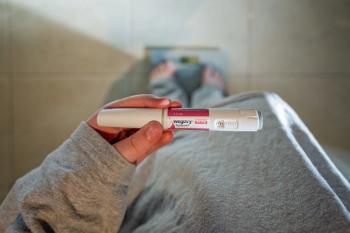
- March 2011 Central Nervous System
- Volume 77
- Issue 3
Pharmacy Insights
After Drug Reactions, Seniors Flock to Emergency Rooms
The availability of drugs to treat nearly every age-related illness is a doubleedged sword for today’s aging population. Despite their potential to thwart symptoms and maintain overall wellness, these medications also land more seniors in the hospital with drug-related complications, a new study shows.
According to data released in March by the Substance Abuse and Mental Health Services Administration (SAMHSA), adverse reactions to drugs account for more than a million visits to emergency departments (ED) by seniors each year. Experts blame polypharmacy and the physiological changes of aging, such as declines in liver and kidney function.
In 2008, an estimated 2,157,128 ED visits were made by patients who presented with adverse drug reactions. Of those visits, 1,111,686 (51.55%) were made by adults aged 50 and older. Consistent with prior research, the study’s authors found that the problem worsened with age. Adults aged 65 and older accounted for 61.5% of medication-related ED visits by older Americans.
Similar studies have cited complex medication regimens as a primary cause of adverse events in this patient population, but the new data reflect a different reality. Nearly 80% of ED visits for adverse reactions were made by patients taking just one drug, according to the SAHMSA report. Central nervous system medications, such as narcotic and non-narcotic analgesics, were leading culprits.
In addition to threatening the health and well-being of seniors, these visits “place a costly burden on health care services,” the report said. Nearly one-third of older adults who visited the ED for an adverse reaction required hospitalization, and the percentage was even higher among adults aged 65 and older.
The findings show that surveillance of adverse reactions must improve, both to maintain drug safety and avoid the preventable cost of hospital admissions. Doing so will require a coordinated effort that involves not only patients and their health care providers, but pharmacies as well, the report’s authors concluded.
“Patients can safeguard against adverse reactions by using one pharmacy to handle all their prescriptions and by advising their pharmacy of any adverse reactions to prescription or OTC medications,” they wrote. Seniors should also maintain a medication record that is accurate, complete, and available to all those involved in their care.
The report calls for systemic change, but SAMHSA administrator Pamela Hyde said the burden lies ultimately with patients and their family members. “Individuals taking medications need to take personal responsibility and not assume that just because the medications are legally prescribed that they are without risk,” she said.
Physicians Found Lax in Monitoring Patients on Opioids
Pharmacists who scrutinize prescriptions for drugs such as oxycodone and hydrocodone often face complaints and resistance from disgruntled patients and physicians alike. New research confirms that questioning prescribing practices for these potentially addictive drugs is worth the headache, however.
In a study published in the March 2 online issue of the Journal of General Internal Medicine, researchers took physicians to task for failing to adequately monitor patients who were prescribed a course of opioid painkillers. Even patients with a history of drug abuse or dependence did not receive thorough follow-up care from their physicians, the report said.
Lead author Joanna Starrels, MD, MS, an assistant professor of medicine at Albert Einstein College of Medicine of Yeshiva University, said that she and colleagues were “disturbed” to find that these patients were prescribed more early refills than those with no history of abuse. “Our study highlights a missed opportunity for identifying and reducing misuse of prescribed opioids in primary care settings,” she said.
For the study, “Low Use of Opioid Risk Reduction Strategies in Primary Care Even for High Risk Patients with Chronic Pain,” researchers reviewed administrative and medical records of more than 1600 patients who took opiods for an average of 2 years. Frequency of office visits, urine drug testing, and early refills were considered indicators of follow-up care.
Urine drug testing, a useful preventive measure, was rare in practice; just 8% of patients and 24% of high-risk patients were tested during the study period. About half the patients visited the physician’s office regularly, with no observed difference among high- and low-risk patients. A total of 23% of patients received 2 or more early refills, and those with a greater risk of misuse were more likely to receive multiple early refills.
Dr. Starrels said that although most physicians are aware of issues related to the monitoring of opioid use, “they haven’t put sufficient strategies into place to help reduce risks.” To minimize chances of abuse, she recommends that physicians insist on frequent drug testing, face-to-face contact, and strict adherence to refill schedules for patients taking long-term opioids.
Articles in this issue
over 14 years ago
Fighting Diversion at Home and in the Workplaceover 14 years ago
Does the Truth Wear Off?over 14 years ago
Efficacy and Effectiveness of Antidepressantsover 14 years ago
Asthma Watchover 14 years ago
Generic Productsover 14 years ago
Generic Newsover 14 years ago
To Substitute or Not to Substitute: That Is the Questionover 14 years ago
Tech Product Newsover 14 years ago
Pharmacy Dispensing Records Called into Questionover 14 years ago
Outlook: Clinical TrialsNewsletter
Stay informed on drug updates, treatment guidelines, and pharmacy practice trends—subscribe to Pharmacy Times for weekly clinical insights.
















































































































































































































